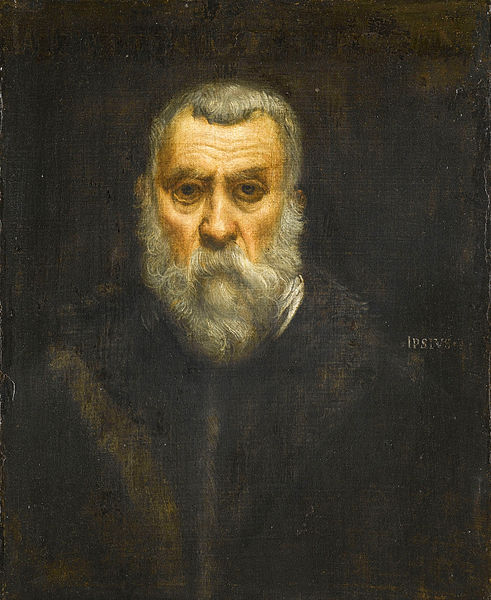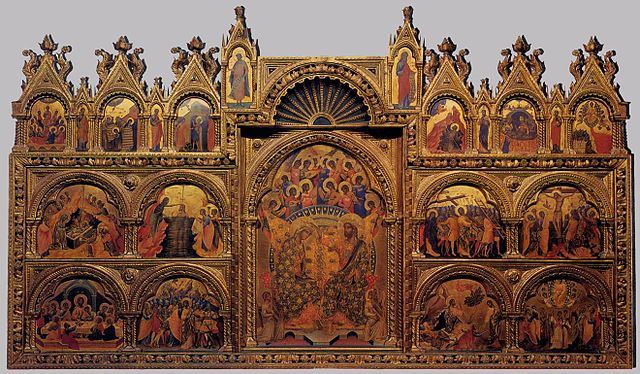Jacopo Robusti, best known as Tintoretto, was an Italian painter identified with the Venetian school. His contemporaries both admired and criticized the speed with which he painted, and the unprecedented boldness of his brushwork. For his phenomenal energy in painting he was termed il Furioso. His work is characterised by his muscular figures, dramatic gestures and bold use of perspective, in the Mannerist style.
Self-portrait, c. 1588; Louvre, Paris
The Siege of Asola (1544–45), National Museum, Poznań
Self-Portrait as a Young Man, c. 1548
Miracle of the Slave (1548)
Venetian painting was a major force in Italian Renaissance painting and beyond. Beginning with the work of Giovanni Bellini and his brother Gentile Bellini and their workshops, the major artists of the Venetian school included Giorgione, Titian, Tintoretto (1518–1594), Paolo Veronese (1528–1588) and Jacopo Bassano (1510–1592) and his sons. Considered to give primacy to colour over line, the tradition of the Venetian school contrasted with the Mannerism prevalent in the rest of Italy. The Venetian style exerted great influence upon the subsequent development of Western painting.
Titian, Salome with the Head of John the Baptist c. 1515; this religious work also functions as an idealized portrait of a beauty, a Venetian genre developed by Titian, supposedly often using Venetian courtesans as models.
Canaletto, The Entrance to the Grand Canal, c. 1730, a typical veduta
Giovanni Bellini, San Zaccaria Altarpiece, 1505, a late work, San Zaccaria, Venice
Paolo Veneziano, polyptych altarpiece with Coronation of the Virgin, c. 1350








